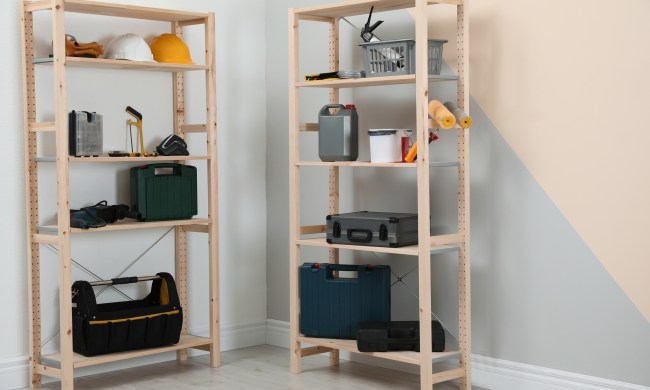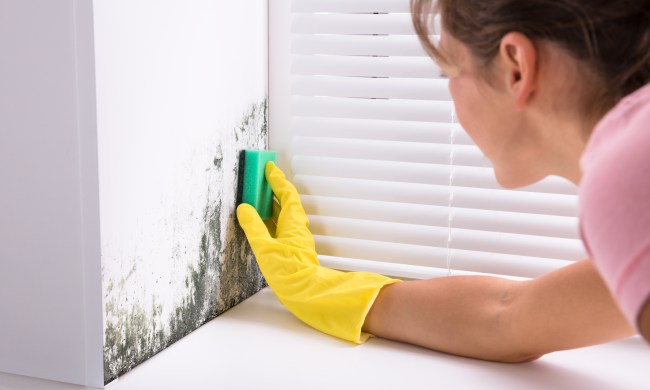Every homeowner knows just how much work goes into keeping a house clean. Ironically, one of the tools you use most often to clean may actually be one of the filthiest items in your home. Yes, we’re talking about your kitchen sponge. As if hand-washing dishes weren’t already one of the most dreaded household chores, now scientists have discovered it may not be all that hygienic either. Are sponges sanitary? Keep reading to learn just how gross your sponge is and how to clean a kitchen sponge.
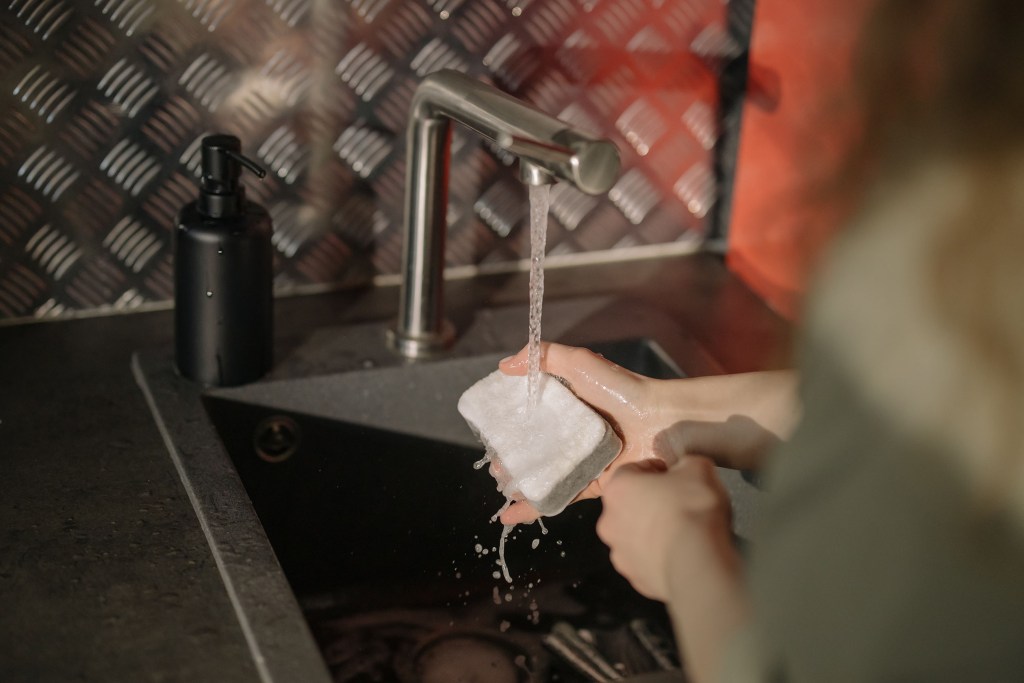
How dirty is your kitchen sponge?
It’s time to rethink how you clean your dishes. A new study in Nature Chemical Biology has found that kitchen sponges provide the perfect home for bacteria to thrive. In the study, researchers distributed different strains of E. coli onto plates with various amounts of wells. Large wells allowed microbes to mix freely, whereas small ones let them keep to themselves. After thirty hours, the researchers returned to study the number and types of bacteria on each plate. They discovered that plates with a moderate amount of physical separation, with structures similar to a sponge, allowed bacteria that live in groups and those that live alone to flourish.
After the initial study, scientists re-created the experiment using a sponge. They found that sponges are better incubators for diverse bacterial communities than laboratory Petri dishes, tools that are literally designed to host bacteria. In addition to their porous structure, sponges offer a damp environment that’s full of food particles. All of this makes sponges an optimal home for bacteria — but not so great for keeping your home clean and healthy.
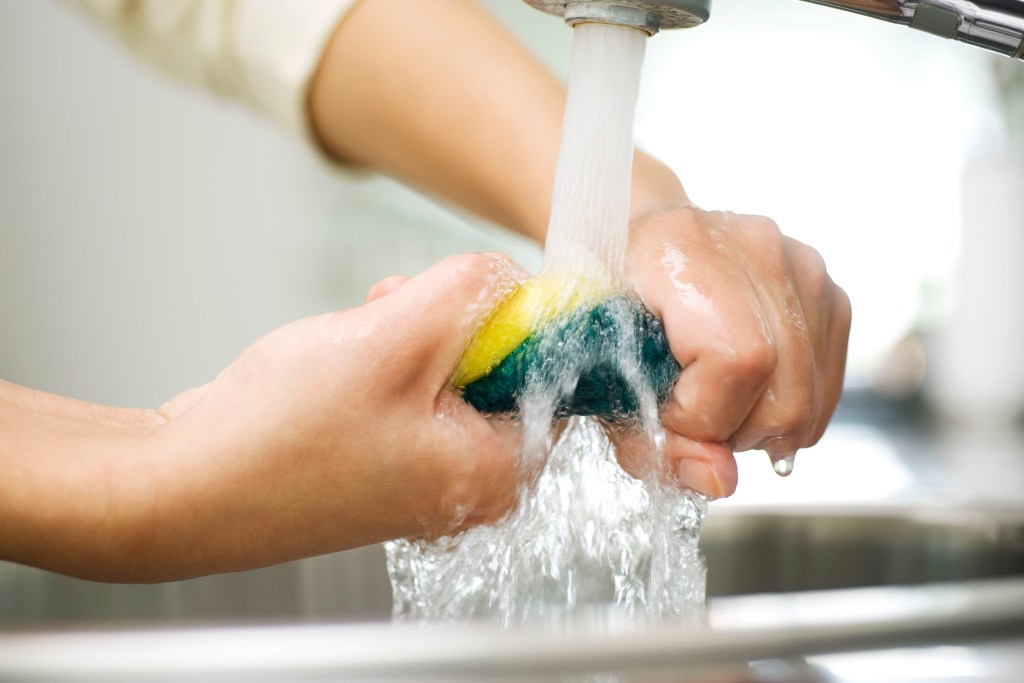
To clean or replace?
Though your kitchen sponge may not be as hygienic as you once thought, that doesn’t mean you need to toss it out. It simply means that you must learn how to take care of it. If you’re asking yourself, “Should I clean my sponge?” the answer is yes. Wring out the sponge after every use so it dries more quickly. You should also clean your sponge every day or every other day.
Even sanitized sponges can grow bacteria. Generally, you should replace your sponge every two weeks. You may need to replace it more or less frequently, depending on how often you use it. If you don’t use the sponge often, you may be able to use it for an entire month before replacing it. But if your sponge has an odor, looks dirty, feels slimy, or starts to fall apart, swap it out for a new one. Additionally, if you use the sponge to clean up raw food messes, sterilize or replace it immediately.
How to clean your sponge
Cleaning your kitchen sponge each or every other day is essential for your family’s health and safety. What is the best way to clean a sponge? Here are a few of the top tried and true methods.
Vinegar
- Soak the sponge in undiluted vinegar for five minutes.
- Squeeze out the excess vinegar and rinse the sponge in warm water before letting it dry.
Microwave
- Soak the sponge in water and place it in a shallow microwave-safe container.
- Microwave the sponge for five minutes, then let it cool for another 15.
- Remove the dish from the microwave and wring out any excess water.
Boiling water
- Bring two cups of water to boil in a pot.
- Submerge the sponge in the boiling water and let it sit for five minutes.
- Allow the water to cool completely before removing the sponge and wringing it out.
Bleach
- Combine one gallon of water with 3/4 cups of bleach, and stir.
- Soak the sponge for five minutes in the mixture, then rinse well with warm water.
Remember: Any time you’re using bleach, work in a well-ventilated room.
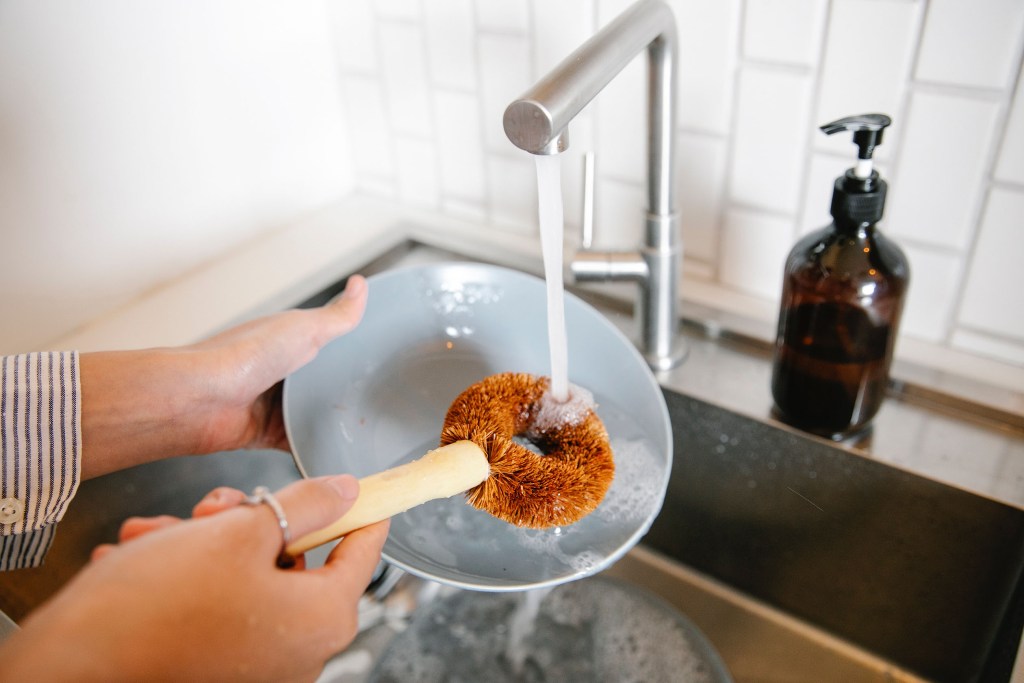
Is there a better way to handwash your dishes?
Let’s face it — cleaning your sponge every other day and replacing it every two weeks isn’t exactly realistic. Though it’s better for your health, it’s not easy to add an extra chore to your already busy schedule. Plus, using and throwing out 26 sponges a year isn’t an eco-friendly choice. For a longer-lasting and more sanitary solution, try one of these sponge alternatives:
- Dish brush: Handheld brushes dry much faster than traditional sponges, which means bacteria die more quickly. And, thanks to the handle, they keep your hands cleaner during use.
- Microfiber sponge: You can use this type of sponge for up to two months since it dries quicker, leaving less time for bacterial growth.
- Silicone sponge: Sponges made of silicone are antibacterial and much easier to clean because of their flat, sealed surfaces. Plus, you don’t have to replace them as frequently.
- Loofah: A loofah is an all-natural cleaning tool that is great for scrubbing. It’s also biodegradable, minimizing your environmental impact when it’s time for a replacement.
Because of their unique structure, dampness, and proximity to food particles, kitchen sponges are breeding grounds for dangerous bacteria that could harm you and your family. However, this doesn’t mean you should stop using sponges altogether. By sanitizing your sponge regularly and replacing it every two weeks, you can keep your home safe and clean. Use the tips above to clean your sponge, or consider switching to an environmentally friendly alternative.


